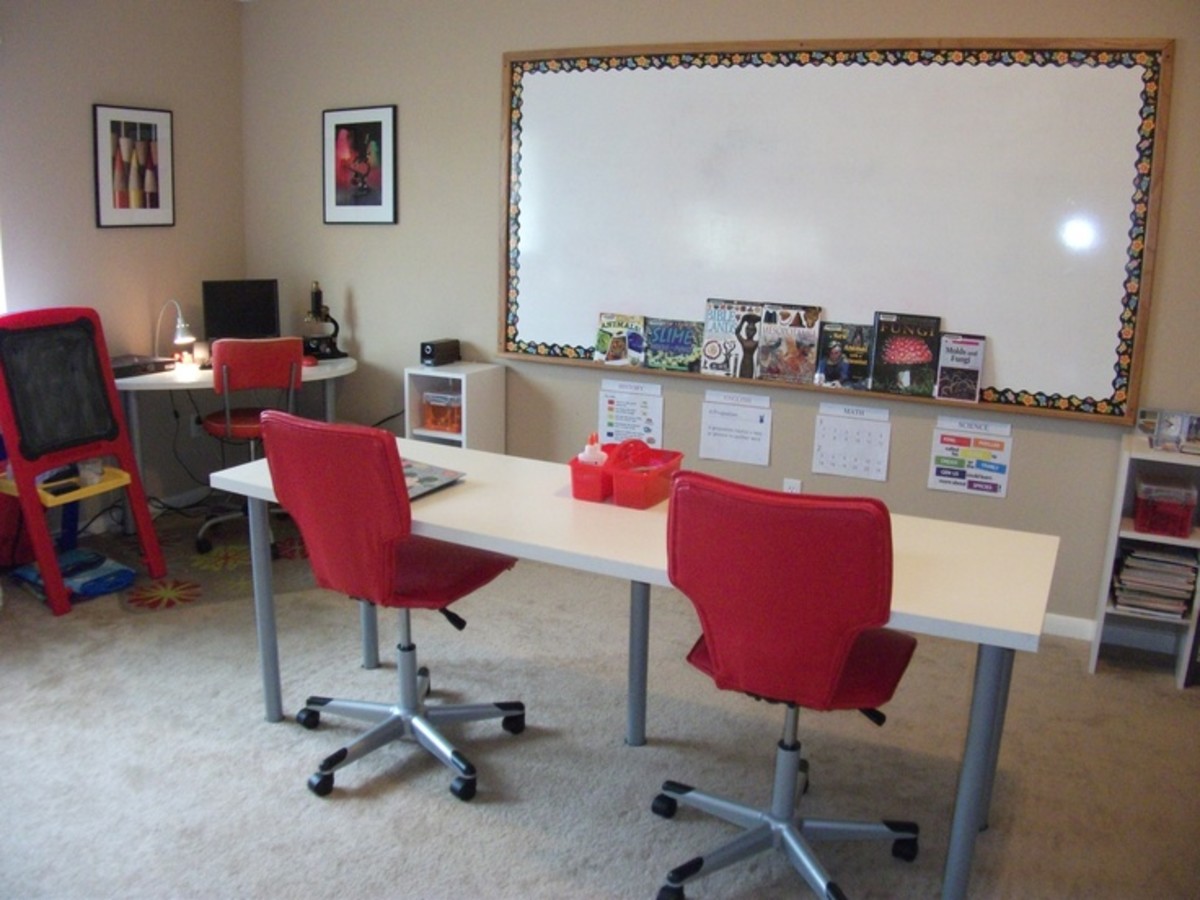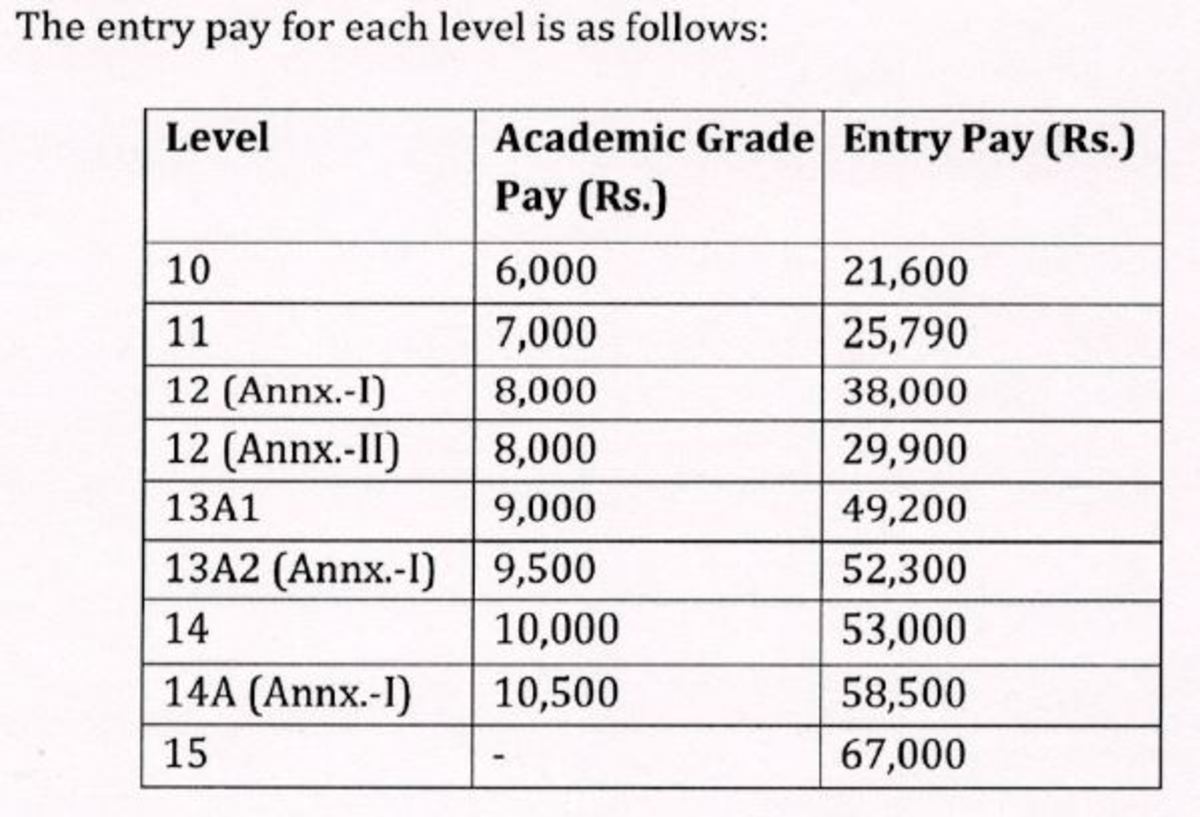I loved teaching with a passion, but I had to stop.

Teaching Is and Was My Calling
Eight years. 32 houses cleaned per week. Two nanny jobs. Painting for a local railroad. Part-time hostess for a swanky restaurant. That's what my life looked like as I worked toward my teaching degree. I was born into a family of ten children. My father worked 16 hour days to pay the bills. He did not make what would be considered a great income. Being religious, he also tithed part of his payroll to the church. When each of us graduated from high school, we were told that if college was a dream of ours, then we were on our own.
My dream of being a teacher was a seed planted as an elementary aged child. I struggled myself with many academic concepts due to an undiscovered learning disability (which wasn't discovered until college) and when I attended school, not all of the teaching staff had obtained teaching degrees. It was an age when coaches could teach classes without a degree and their knowledge on the subject was, to be nice, very little at times. I was passed on yearly being told that I was a nice girl who worked hard and I would get the gift of a "D" in math (my area of challenge) because I tried.
Move ahead years after graduation and I'm at a big 10 university, on the Dean's list and earning two degrees because my freshman, college advisor diagnosed my learning deficit and worked with me by introducing strategies that I had never been taught before.
I received my degrees in Special Education and Elementary Education (K-8) with pride and was soon hired within the month of my graduation.
As a child, the embarrassment, scrutiny and judgment I had to deal with from teachers and other students only propelled me to work harder than most. I knew I wanted to work with students that struggled academically to assure they would never feel the way I did about themselves.
My first five years were spent at the middle school level teaching one year of general education and the other four special education. I loved my job! Working with teenagers is a challenge in itself. Hormones and peer pressure dictate student attitudes and involvement but I always felt my classrooms were full of brilliant students just waiting to burst from their cocoons.
My sixth year of teaching, I was offered a position at the elementary level teaching special education. This move didn't provide more income but I would be the only teacher at the elementary level for the academically oriented children that struggled severely with learning issues. I chose to make the move, knowing that if I could influence the younger subset of children, perhaps they wouldn't enter the middle school level feeling inadequate. My goal was to empower the "littles" and teach others acceptance of differences.
Elementary education turned out to be my true calling. My class sizes varied yearly. A couple years I had 26 students in my classroom (with 3 aides) and other years my class would dip down to seven students. The last 10 years of my teaching career produced class sizes of around eleven.
I set out to educate students and staff in the school about acceptance of my students and taught empowerment to my charges. I shared my personal stories with them and expressed how I was living proof that one could overcome academic challenges. We also discussed how development rates differ among us. That they may not truly understand the concepts being taught to them until they are actually using them in the "real" world but each lesson had meaning and a purpose and this seemed to aid in the advancement of each student.
I taught for 32 years and 31 of those years were solely in special education. I worked with disabilities such as cognitive impairments, autism, emotional and trauma induced impairments, physical impairments, learning disabilities and more. I can say without a doubt that I absolutely adored my job and when I retired, it was one of the most difficult decisions I've ever had to make.

So, Why Retirement?
There were two reasons for my retirement. Two reasons that affect children each and every day. My story can be the story of every teacher across the nation. Education, while such a necessity, is one of the first areas to be affected by budget cuts, unfair laws that adversely affect children and teachers and has changed in a way that what's best for children isn't always the top of the agenda for administration bosses.
The first reason was health. The second reason was philosophy.
Health
The building I worked in was built in the 50's. It had an addition added about 20 years ago but frankly, the addition was in worse shape when looking at water damage and mold than the older part of the building. Much of the original copper piping still existed in my building. Most of the doors and windows had been replaced as well as the carpet that had been laid on flooring but those were just fix ups to make presentation of the area more appealing (and it did assist in helping with insulation against the cold and severe heat). There was a boiler system that heated (very poorly) the old section and only the addition had air conditioning which either froze the teachers and students or didn't work well at all. Rarely, did a day go by where students weren't suffering from the extreme temperatures. Small repairs occurred all the time but with time and age comes the formation of mold spores that are hidden from the naked eye. These spores plant themselves in vents, cracks, ceilings, walls and more and begin to multiply.
People without allergies or sensitivities to mold or moisture aren't affected like those of us who are. Unfortunately, my allergies had gotten to the point where my weekly allergy shots could not combat the toxins in the air and hidden crevices and I was chronically ill. These illnesses became more severe every year and two years ago I developed sepsis and found myself fighting for my life during my nine day stint in the hospital.
According to the AMI Environmental Company; a group that specializes in facility-based environmental problems affecting facility operations, renovation and demolition activities, "Some of the most serious moisture problems develop out of sight. Moisture can accumulate behind walls or underneath building materials, leading to hidden mold and moisture problems that gnaw away at your building and leave students feeling sick. All the while, you’re completely unaware of the damage being done."
CNN reported five years ago, "Figures are hard to come by, but studies have estimated that a third or more of U.S. schools have mold, dust and other indoor air problems serious enough to provoke respiratory issues like asthma in students and teachers.A national survey of school nurses found that 40% knew children and staff adversely affected by indoor pollutants.Indoor air affects more than health. A growing body of research suggests students also perform better in schools with healthier air."
The EPA, an official website of the United States even reports, "Molds reproduce by making spores that usually cannot be seen without magnification. Mold spores waft through the indoor and outdoor air continually. When mold spores land on a damp spot indoors, they may begin growing and digesting whatever they are growing on in order to survive. Molds gradually destroy the things they grow on. Many types of molds exist. All molds have the potential to cause health effects. Molds can produce allergens that can trigger allergic reactions or even asthma attacks in people allergic to mold. Others are known to produce potent toxins and/or irritants. "
I knew my building was making me sick. My doctors and allergist knew this too. However, people expect children to get sick when they enter school. They believe that many of the reasons for illness stem from the sharing of materials between children and the lack of hygiene. When children get sick, people expect the teachers to get sick as well. Doctors may prescribe antibiotics or may tell the sick that it's a virus that needs to complete its course and leave the body on its own.
When I got sick, I always required medication because my immune system became so compromised that I couldn't fight any type of illness off. At the end of every year, I had taken a minimum of six different medications. My body could not fight off even the smallest of colds and it would turn into something horrific like pneumonia or bronchitis.
I was told that no mold was obvious in the building. Even though there were water stains on multiple ceiling tiles throughout the building, cracks where water would seep up on the floor or down the wall, I was told that it wasn't possible my illnesses came from my environment.
After my hospitalization, I vowed that if I returned to work and started the year out ill, I would have to resign myself to accepting that I could no longer continue to work as a teacher. I know I could have sought out employment somewhere else but I am nearing 60 with two Master degrees and at the top of the pay scale. I wasn't the type of employee that financially struggling districts find appealing.
Sure enough, the fall of last year, I began the year on my first round of medication. After working in my room during the month of August, preparing the classroom for the new year, my sniffles turned into bronchitis and when I greeted the children their first week of school, I was already compromised health-wise. By the time I announced my retirement due to occur in June that February, I was on my fifth round of medication.
There are plans to restructure and rebuild most of the building that I worked in but the ground breaking won't occur for five more years. I feared I would be dead by then. I can say happily that since I have removed myself from the building, I have not had even a common cold or sniffle. I have been healthy for the first time in years. I even tutor children who wipe dripping noses on my dining room table and hug me with germy hands but I have not gotten sick. Proof again, that my environment was slowly killing my immune system.
The condition of my building is the condition of any school built before the 1990's. Older buildings may still contain asbestos and lead. Water testing done by communities show dangerous levels of toxins in some area water supplies.
I continue to hear about children getting ill when they begin school. Teachers who are consistently fighting some type of sickness. The condition of the environments in which children and those who work with them spend most of their day 9-12 months out of the year are often less than desirable when one looks at environmental causes of illness.
Schools often don't have the financial means to make necessary repairs and support the academic materials needed for students. Monies given to schools by the state and federal government focus on test scores and teacher performance and there is little compensation if any, to repair buildings in dire need of help. The EPA has a link that discusses pro-active measures that can be taken and how to determine if a school is contributing to illnesses. Until the government (who has control over monies) decides to make educational environments as important as test scores, I will worry about the health of children and the staff that supports them.
Here is the link to the EPA site: https://www.epa.gov/mold/mold-and-indoor-air-quality-schools

Philosophy
The second reason I chose to retire was the adopted philosophy and direction that so many schools are steering toward. Testing and overuse of technology. What's best for children and focusing on their individual talents is becoming a shadow of the past. With the burst of technology that is infiltrating schools right now, children spend just as much time (if not more) on the computer receiving instruction as they do receiving direct instruction from a teacher. Call me old school but I feel this is wrong.
We spend so much of our personal time on electronic devices that remove the need for face to face communication, learning how to negotiate disagreements and using skills necessary for interpretation of tone, facial expressions and basic communication. Students beginning in kindergarten are spending more time on reading and math activities via the computer and testing on the computer is replacing paper and pencil assessments. Again, call me old school but I can't help but question the validity of some test results gathered from the computer when children who aren't adept at computer skills or need individualized help navigating subject matter are expected to perform this task electronically. Teachers can request deferring from electronic examinations for some students but it must be approved and it can be denied. If given permission, the teacher still needs to input the assessment information online for scoring.
I am not against accountability and monitoring of student performance and progress. This is necessary to assure that the student is moving forward in the curriculum and obtaining the goals targeted for their grade level. However, if you look at student performance through the years, there are more students that are labeled at risk now than there has been in the past.
People may argue that the family unit has changed, the curriculum has changed (it has and it has gotten more difficult instead of maintaining reasonable goals) or food or additives have affected children's ability to process correctly. All of these factors may contribute somewhat but the way schools have been coerced into placing testing and teaching to the test to earn funding dollars is nothing short of a crime and the victims of this crime are the children.
Schools are removing recess time, cutting school specials such as art, gym and music in order to fit the ever increasing curricular mandates into the day. Gone are the days where a teacher could introduce a special topic of interest and have the children research, study and produce projects demonstrating their understanding. Teachers have less time to make important connections with their students because the time table for the curriculum moves rapidly.
I am so appreciative for teachers that continue to fight this trend. Teachers that try to incorporate humor, projects and an individualized approach when tackling the core curriculum. There are many of these teachers. In fact, most teachers I know dislike the trends in education.
The Washington Post reported: "Ron Maggiano is a veteran teacher who won the Disney Teacher Award for innovation and creativity in 2005 and the American Historical Association’s Beveridge Family Teaching Prize for outstanding K-12 teaching in 2006. After a 33-year teaching career, he resigned last year from West Springfield High School in Fairfax County, Va., where he taught social studies. In this post last year, he explained why he was leaving a job he had long loved:
I can no longer cooperate with a testing regime that I believe is suffocating creativity and innovation in the classroom. We are not really educating our students anymore. We are merely teaching them to pass a test. This is wrong. Period."
Ron's statement resonates among the teaching community. Teachers are trained to determine what teaching strategy and delivery works best for learners. Money drives districts to ignore individuality and student interests and instead forces children to have common goals. Those goals end up being high performance on tests.Maggiano created a list of problems created by standardized tests. Having worked in the school system for 32 years, I've been privy to the changes he describes. At first, it seemed to be a slow progression. In the past five years, assessments have risen in importance, above student needs; both academic and emotional. Here is his list:
1. The obsession with high-stakes standardized tests is stifling creativity and imagination in the classroom.
2. The obsession with test scores as the chief “accountability” metric for students, educators and schools has led to the exams becoming an end instead of a means to an end. Even my students, some with cognitive impairments, were expected to take online, standardized tests. Some of these children struggled with writing their last name but were expected to perform tasks involving multiple choice and narrative responses.
3. Standardized tests are being used in high-stakes ways to evaluate and punish teachers. Many states use student performance to dictate teacher salary. Again, expecting all students to perform the same way is unrealistic and ignoring the fact that children develop at different rates. This holds true for academics too.
4. The obsession with standardized testing by reformers is driving good teachers to leave their profession.
5. The obsession with standardized tests is promoting a culture of cheating in many schools.
6. The obsession with standardized tests is driving teachers — fearful that their jobs will be stake if student test scores don’t rise — to teach to the test.
7. When standardized tests are the most important thing, the fostering of critical thinking in the classroom gets short shrift.
8. The obsession with raising student standardized test scores is leading to a one-size-fits-all curriculum that ignores the needs of individual students. Not everyone is destined for college. In fact, many professions and jobs have workers that earn more money than their college educated peers.
9. Standardized tests are not helping to prepare students for college or careers.
10. The high-stakes standardized tests used in U.S. public schools do not accurately measure what students have learned. Instead, we are seeing more students exhibit depression, self harm and anxiety because of not being able to live up to the standards set before them.
11. Standardized tests mostly benefit companies making millions from them. A new curriculum for reading or math can cost a district thousands if not millions of dollars. Companies are jumping on the band wagon to create materials that correlate with the core curriculum and include online assessments. This is appealing to districts thinking that an all in one program will save them money and time. At what expense however?
A few years ago, Arne Duncan, the Secretary of Education for the United States admitted that standardized testing had gotten out of hand according to a report done by PBS.
The National Council of Teachers published a report that stated teachers’ institutional tasks have increased because they are expected to take up work related to testing in addition to their regular teaching duties. Institutional tasks include: • collecting, organizing, and analyzing data associated with tests • grouping and regrouping students according to test performance • developing vertical articulation of the curriculum to align with tests • coordinating students’ assignments, based on test scores, to remedial programs.
As a result of spending more time on institutional tasks like these, teachers have less time for instruction in their own classrooms. One study found that teachers lose between 60 to 110 hours of instructional time in a year because of testing and the institutional tasks that surround it. Instruction is also diminished by mandatory curricula that have been developed to prepare students for standardized tests.
The Harvard Graduate School of Education had a paper published in 2016 reporting a number of recent reports provide insights into the amount of time that students are spending on testing. In a report from the Center for American Progress, Lazarín (2014) found that students in grades 3 through 8, as compared with students in earlier and later grades, spend the most time on testing during the school year, averaging around 15 to 16 hours. On average, students in grades 3 through 8 are taking 10 exams throughout the school year, as compared to around 6 exams for students in grades K-2 and 9-12 (Lazarín, 2014). In part because of state-mandated summative tests, many districts have imposed additional testing requirements, including “interim” or 3 “benchmark” assessments, which contribute to the time students spend testing each year. In many cases, these district assessments require more time than state testing (Lazarín, 2014).
A report from the National Education Association also expressed concern over testing when they wrote: "The focus is being taken away from student learning and toward mandated standardized testing and has created a culture of high-stakes testing whereby too many teachers are evaluated based on students' test scores. Both the amount of standardized testing and the high stakes associated with such testing have taken a toll on teachers' morale.
Teachers must attend college for four years and also participate in practicums, student teaching (for many colleges, this occurs in the fifth year of the program) and as of 1988, continue their education by accumulating credits yearly just to maintain their teaching certificate. Yet, despite their professional degree, money speaks and their expertise is often ignored when it comes to meeting the needs of their students.
Due to the fact that funding for schools is based on student assessed growth and student performance is now tied to teacher evaluations, it is no wonder we have more at risk students, rising behavioral issues in the school, more children being diagnosed with attention issues and Autism like behaviors and successful teachers leaving the field.
I couldn't accept any longer the changes that had occurred in my district and in the neighboring districts as well. Over my 32 year career, I had seen education move from being child centered to test centered. While I had more leeway as a special educator in determining pace and content used in my classroom, I felt the need to try to keep up with the proposed schedule so that my students, if finding the opportunity to be mainstreamed into the general education setting, could keep up with their peers. As an educator, I have always believed that everyone can learn. We may need different routes in which to travel to get our information but exposure and repetition of information would facilitate that growth and I took every opportunity I could to make learning meaningful. Many teachers do this on a daily basis. Despite the reprimands of their authority figures and despite the presentation of lower test scores.

Morale
Students are exhibiting more behavioral issues in schools. It's no wonder. In 1983 an article called "A Nation At Risk" was published. I remember it well because I was a student in college during this time and it was the focus of one of my education classes. The premise of the report compared American students to those overseas; particularly the Asian students in the countries of China and Japan.
You may have heard the phrase of comparing apples to apples and not apples to oranges. This article compared children growing up in the United States and attending American schools to children attending schools in Asian countries that didn't have the same standards and rules for equality. At the time, students being compared in the Asian countries didn't reflect American schools. Even today, many cultures in other countries don't reflect the mandates American schools have in place. For one, not all children were allowed or had the opportunity to be educated in the outside countries. Children with disabilities didn't have the right to receive an education. Children from poor communities were often barred from schools.
While A Nation At Risk cited statistics such as: "The average achievement of high school students on most standardized tests is now lower than 26 years ago when Sputnik was launched," and "[The SAT demonstrates] a virtually unbroken decline from 1963 to 1980. Average verbal scores fell over 50 points and average mathematics scores dropped nearly 40 points." The report de-emphasized the fact that more students than ever were graduating from high school and attending college, and that top U.S. students led the world in academic achievement. (NPR)
The Nation At Risk propelled the push for standardized testing beyond what was already given yearly in schools.
By the 1980s, college was more available to more people, and the idea of getting a college degree became important to getting a good job. Many more people were taking the SATs and applying to colleges. This included more people of race, more low-income students and other disadvantaged groups that historically didn't attend college.
In lumping scores together, as "A Nation At Risk" did, you saw declining average scores from the 1960s to the 1980s. The Department of Energy commissioned a follow-up analysis of test score trends in 1990. It was known as the Sandia Report. This report showed that most of these groups of students were improving slightly on test-taking over that time.
"The idea that American schools were worse just wasn't true," says James Guthrie, an education professor at Lynn University in Florida. Guthrie published a scholarly article in 2004 titled "A Nation At Risk Revisited: Did 'Wrong' Reasoning Result in 'Right' Results? At What Cost?" "I looked at it every which way," he says now. The authors in 1983 "were hell-bent on proving that schools were bad. They cooked the books to get what they wanted."
Recently, Nation's Report Card came out, showing steady scores in most areas and improvement since 2015 in one area out of four tested, eighth grade reading. However, these results were labeled as disappointing by advocates and supporters of the archaic A Nation At Risk.
The College Board reported two years ago:
- In 1983, the averages in reading were 508 for boys and 498 for girls. In math: 516 for boys, 474 for girls.
- In 2016, reading scores averaged 495 for boys and 493 for girls. In math: 524 for boys, 494 for girls.
As you can clearly see, an increase in testing has not produced an increase in performance among students. In fact, additional testing is creating more at risk children.
According to the latest National Assessment of Educational Progress, and reported in The Washington Post, “the nation’s high school seniors have shown no improvement in math and reading performance since 2009.” For a generation we have been pumping trillions in fresh money into our schools and experimenting with a variety of creative reforms, with little to show for it.
A 2015 report from the Australian Early Development Census (AEDC) noted that children’s mental health was becoming worse. The emotional maturity domain, for instance, saw a decrease in the number of children developmentally on track (from 78.1% to 76.4%) and an increase in the number of those who were developmentally vulnerable (from 7.6% to 8.4%) and at risk (from 14.2% to 15.3%).
Yet, children are now expected to enter kindergarten already having pre-school experiences and owning skills that used to be taught to new students. Within the first month of school, children are identified as at risk if they aren't moving along in the mandated curriculum chosen by the district. Children from low-income families are more likely to start school with limited language skills, have less parental support with homework, and deal with more emotional and social problems that interfere with learning. Many children from low-income families don't have the educational opportunities that their peers have. Attending pre-school is one. Is it fair to these children that they be labeled and expected to participate in various interventions at school because they didn't have prior schooling before they actually attended school? Are schools ignoring the fact that development and positive allowance of normal progression that acknowledges maturity, readiness and exposure to a new environment also determines success?
Harvard University researchers have found that children who start school up to a year sooner than many of their peers are more likely to be diagnosed with ADHD — even if they don’t really have the condition. As a result, large numbers of children may be improperly labeled with the disorder when, instead, they are just immature.
In addition to an increase in undesirable behavior in students, teacher morale is at an all time low. The following video describes this well.
I truly feel that our children are at risk and this in turn creates a nation at risk. Not in the way inferred by the article written in the early 80's but by creating an environment for children that poses not only health risks but emotional and educational risks.
I love being a teacher. I loved my job. I envisioned being found laying on the floor under the dry erase board, holding a marker in my hand for my last day on Earth! I never imagined that I would retire. 32 years wasn't long enough but it had to be.
The effects of my retirement haven't been wonderful. I tutor children through the week and took on a job working with an agency that assists the elderly so that I can pay my bills. I am working with urinals, toileting, bathing and feeding those that cannot as well as cleaning houses and prepping meals for others. I also instruct art classes when needed. My salary was cut in half and I cannot afford my home anymore and am planning on selling it within the next few months. I am lucky to have insurance but it's different now with a larger deductible, less coverage and more co-pays. I am not sitting in my pajamas drinking coffee and vacationing in retirement. It wasn't something that I wanted but something I had to do. I know that in comparison to many, my life is charmed. I feel blessed to have what I do. I am not complaining, rather setting the record straight about what retirement for an educator looks like. I've had teacher friends that ended up retiring because they made more earning tips waiting tables in five star restaurants (on weekends) than they did in their profession. Our budgets are minimal (mine was 300.00 a year) and we spend a lot of our personal funds on classroom materials so that our rooms are cheery and a nice place to be. If we want to enhance the curriculum, our money goes into buying supplies for projects.
Kudos to the educators, para pros (aides) and people that continue to work with children despite the obstacles that are consistently thrown their way. I hope that in reading this, you will be more inclined to support your local schools with supplies that include facial tissues, disinfecting wipes and hand sanitizer!
I will always seek out ways to help and empower children. Schools will change when communities begin to become more involved in the health and safety of our children. We need to impress upon school administration that testing our children as much as they do is detrimental. We need to bring back breaks, recess and incorporate music, art, physical education and other areas of interest so that students who are not academically driven can pursue and thrive in other areas. Not everyone is meant to be a rocket scientist. If you look at the people who actually keep the world functioning, it's not the high power, money making people. It's the service workers such as our food service people, garbage collectors, factory workers, police and fire fighters, teachers, department and restaurant workers and more. We need to make students the top priority in education again and not testing. Children who are anxious, over tested, over exposed to electronic devices and those that miss out on personal connections through conversation and familiarity with another person cannot become well adjusted, functioning adults.
I have to believe that one day, what's best for kids will once again become a top priority in our country.
Do you feel children are over tested and over exposed to electronic devices? You may not agree with me. I am curious to see your response.
© 2019 Laura Cole









